October Visual Primary Sources for the History Classroom
Activities for the History Classroom
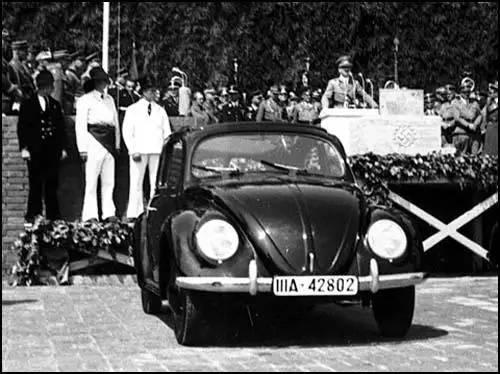
Question: Why would Adolf Hitler attend a rally for the Volkswagen car?
For other questions on this subject see: Hitler's Volkswagen (The People's Car) (Answer Commentary)
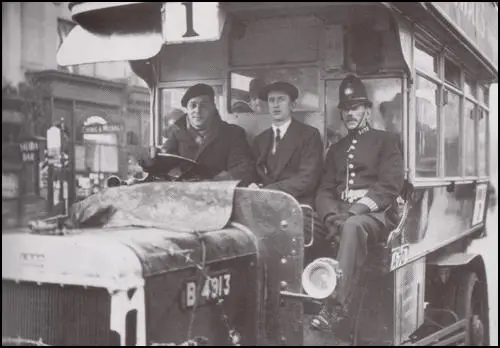
Question: What does the picture above tell us about the General Strike?
For other questions on this subject see: The 1926 General Strike and the Defeat of the Miners (Answer Commentary)
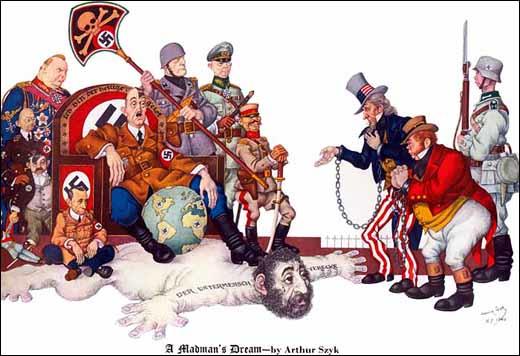
Question: Do you consider this cartoon as being an example of "propaganda"?
For other questions on this subject see: Heinrich Himmler and the SS (Answer Commentary)
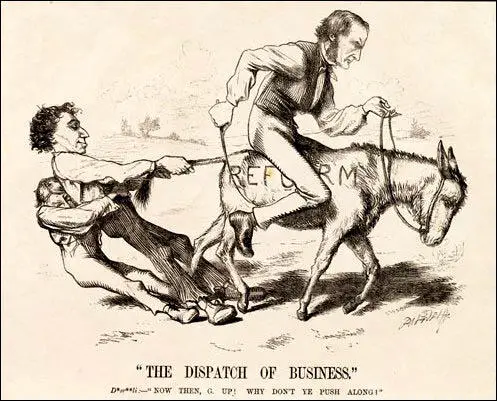
Benjamin Disraeli to William Gladstone: "Now then, G up: Why don't ye push along!"
Question: Explain how the cartoonist uses a donkey to discuss the issue of parliamentary reform.
For other questions on this subject see: Benjamin Disraeli and the 1867 Reform Act (Answer Commentary)
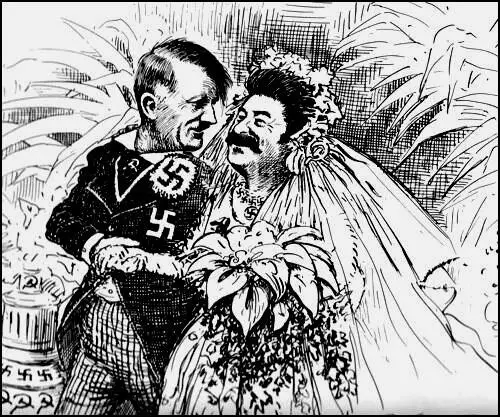
Question: On 28th August, 1939, the Nazi-Soviet Pact was signed in Moscow. What point do you think Clifford Berryman is making in his cartoon.
For other questions on this subject see: An Assessment of the Nazi-Soviet Pact (Answer Commentary)
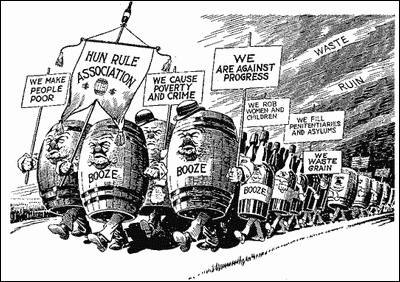
Question: Describe the different reasons for being in favour of prohibition expressed in the cartoon above..
For other questions on this subject see: Volstead Act and Prohibition (Answer Commentary)
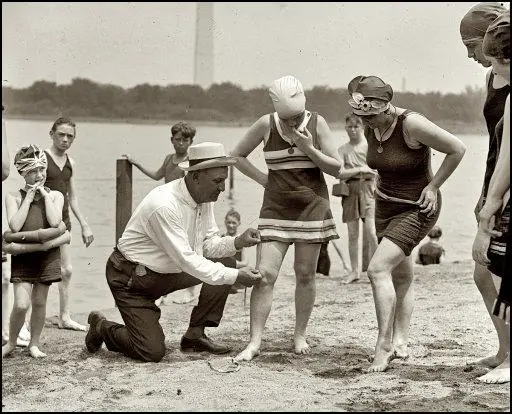
Tidal Basin bathing beach in Washington (30th June, 1922)
Question: Explain what is going on in the photograph above.
For other questions on this subject see: Women in the United States in the 1920s (Answer Commentary)
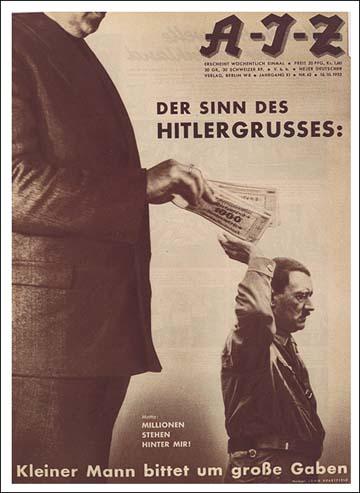
Question: Read the page on John Heartfield and explain why photomontage was such an effective weapon against Adolf Hitler and why his work was banned in Nazi Germany.
For other questions on this subject see: Adolf Hitler v John Heartfield (Answer Commentary)
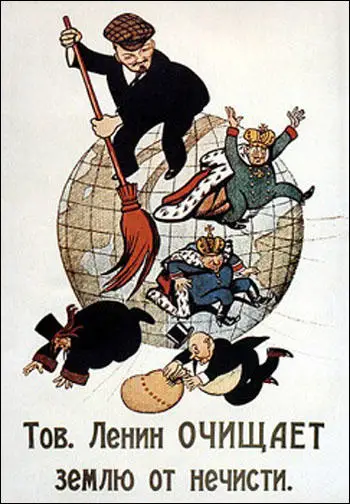
Question: Interpret, Comrade Lenin cleans the Earth from Scum, from the point of view of: (a) an observer sympathetic to Lenin; (b) an observer hostile to Lenin.
For other questions on this subject see: The Bolsheviks (Answer Commentary)
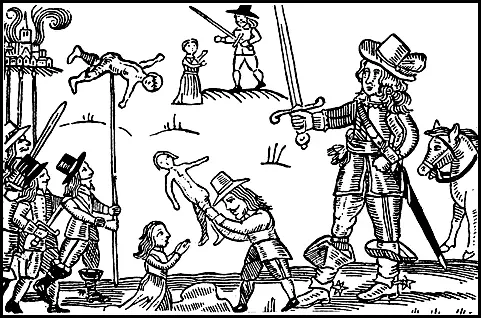
Question: This picture was produced during the English Civil War. Would an historian writing about the conflict find this source useful?
For other questions on this subject see: Military Tactics in the English Civil War (Answer Commentary)
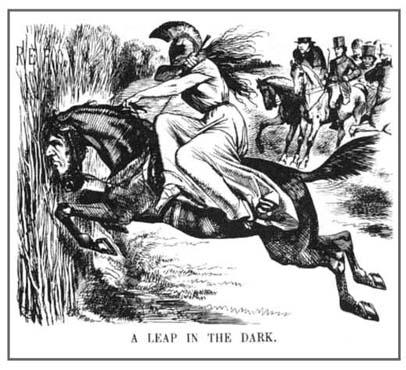
Question: John Tenniel's cartoon appeared in Punch Magazine on 3rd August, 1867, is a comment on Benjamin Disraeli's 1867 Reform Act. Did Tenniel support the proposed legislation?
For other questions on this subject see: Benjamin Disraeli and the 1867 Reform Act (Answer Commentary)
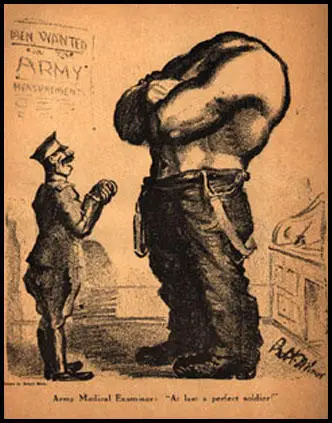
Robert Minor, The Masses (July, 1916)
Question: Can you explain why the artist Robert Minor and the magazine The Masses were charged with violating the Espionage Act in July 1917.
For other questions on this subject see: American Artists and the First World War (Answer Commentary)

Question: Read the account of the Ku Klux Klan and then explain the meaning of Thomas Nast's drawing.
For other questions on this subject see: The Ku Klux Klan (Answer Commentary)
Question: Explain the meaning of this Russian cartoon. It will probably help you if you read this article on Rasputin.
For other questions on this subject see: The Life and Death of Rasputin (Answer Commentary)
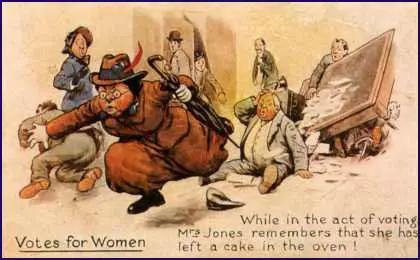
Question: Anti-Suffrage Society was established in July 1908 by the popular author, Mary Humphry Ward. She argued that: "It is time that the women who are opposed to the concession of the parliamentary franchise to women should make themselves fully and widely heard. The matter is urgent. Unless those who hold that the success of the women's suffrage movement would bring disaster upon England are prepared to take immediate and effective action, judgement may go by default and our country drift towards a momentous revolution, both social and political, before it has realised the dangers involved."
The postcard above was issued by the organization in 1908. Do you think that this postcard would have been effective in persuading women that they did not need the vote? How does the propaganda value of this postcard compare to others produced by the organisation?. You can see other examples here:
Question: What point is Bill Mauldin making about the Ku Klux Klan and the House Un-American Activities Committee.
For other questions on this subject see: The Ku Klux Klan (Answer Commentary)
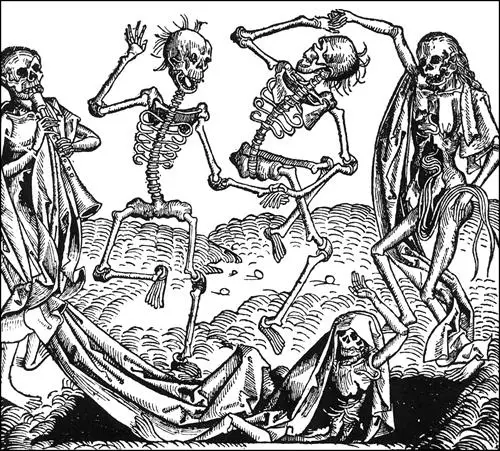
Question: Read the page on the Black Death and explain if Dance of Death provides any useful information on the impact this disease had on the population.
For other questions on this subject see: Contemporary Accounts of the Black Death (Answer Commentary)
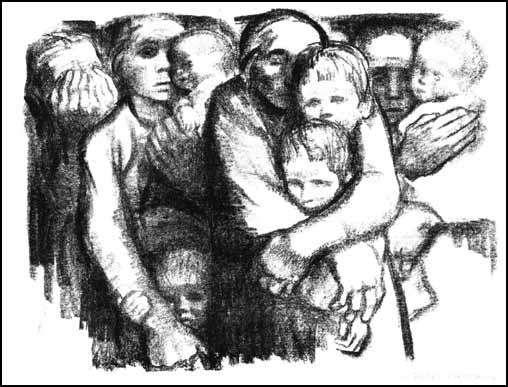
Question: Read the page on Käthe Kollwitz and explain with reference to Widows and Orphans why she is known as an anti-war artist.
For other questions on this subject see: Käthe Kollwitz: German Artist in the First World War (Answer Commentary)
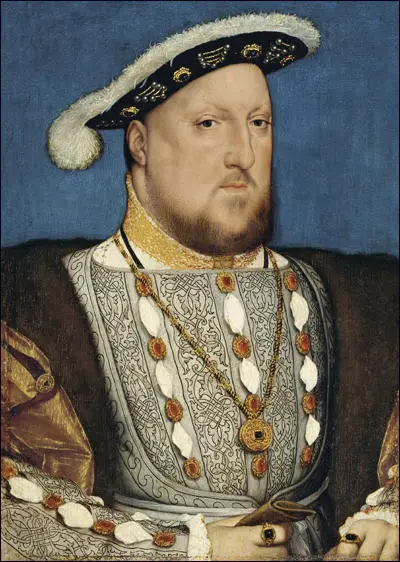
Question: Explain why this painting is so important to historians? A copy of this painting was sent to all the main rulers in Europe? Why?
For other questions on this subject see: Hans Holbein and Henry VIII (Answer Commentary)
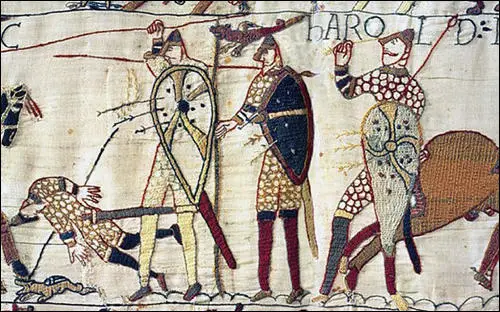
Question: Read the page on the Bayeux Tapestry and then explain how useful this source is for an historian writing about the Battle of Hastings.
For other questions on this subject see: The Battle of Hastings (Answer Commentary)

